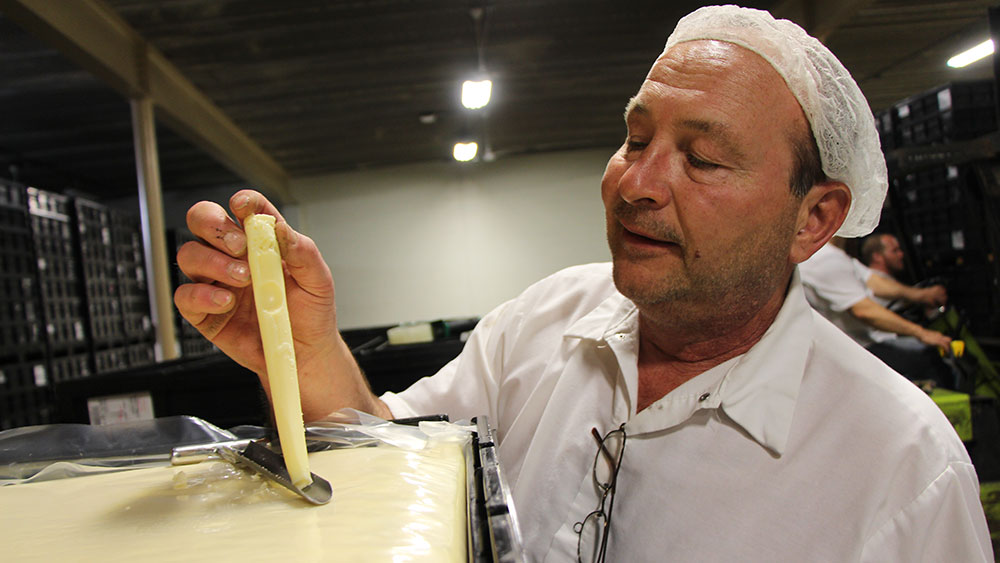Unlocking the Secrets of Artisanal Cheese Making: A Detailed Do It Yourself Overview
In the realm of culinary craftsmanship, artisanal cheese making stands as a testimony to the fragile balance between custom and technology. Each action in the process, from choosing the ideal milk to refining aging strategies, holds within it a wealth of expertise gave through generations. As we start this journey to demystify the art of producing splendid cheeses, we are confronted with a tapestry of abilities and keys waiting to be unwinded. Join us as we check out the complexities of this old craft, where perseverance, art, and scientific research converge to produce tastes that tantalize the detects.
Selecting the Right Milk
When embarking on the trip of artisanal cheese making, the selection of milk plays a critical duty in identifying the high quality and attributes of the end product. The type of milk picked affects the flavor, appearance, and overall account of the cheese. Raw milk, right from the animal, is favored by many artisanal cheesemakers due to its one-of-a-kind blend of enzymes, germs, and flavor compounds. Making use of raw milk comes with threats and guidelines, making sterilized milk a safer alternative for newbies.
When choosing milk for cheese production, it is essential to take into consideration the fat content. Higher fat content in milk can lead to a creamier and richer cheese, while lower fat content may result in a drier and stronger texture. In addition, the resource of the milk, whether from cows, goats, sheep, or buffalo, adds unique flavors and attributes to the cheese (Floridia Cheese). Each type of milk brings its own subtleties, allowing for a vast variety of cheese selections to be crafted based upon the picked milk. Ultimately, the choice of milk is a fundamental decision that establishes the foundation for a successful artisanal cheese-making undertaking.
Culturing and Coagulating
To launch the cheese-making process, the essential steps of culturing and coagulating should be very carefully carried out to change milk right into curds and whey. The kind of society made use of can substantially affect the flavor, texture, and ripening of the final cheese item.

The timing and temperature control throughout culturing and coagulation are essential variables that affect the final result of the cheese. Proper execution of these steps is important to make certain the wanted appearance, taste, and uniformity of the artisanal cheese being generated.
Draining and Pressing Curds
After the milk healthy proteins have actually coagulated and the curds have actually been reduced to launch whey, the following important step in artisanal cheese making involves draining pipes and pushing the curds to accomplish the wanted appearance and uniformity of the last cheese product. The time for draining pipes can differ depending on the type of cheese being made and the desired moisture content.
Pressing helps remove any staying whey and compacts the curds to form a solid cheese wheel. Correct pushing and draining pipes are critical steps that significantly affect the quality and features of the artisanal cheese being generated.
Aging and Flavor Techniques
Carrying out careful aging and flavoring methods is essential in enhancing the depth and complexity of artisanal cheeses, raising their preference profiles to elegant levels of improvement and class. Aging plays a vital role in creating the special tastes and textures that distinguish artisanal cheeses.
Seasoning methods also add considerably to the last taste of artisanal cheeses. Cheesemakers may select to present added tastes by including active ingredients such as natural herbs, spices, or perhaps fruits into celebrity during the production process. Additionally, some cheeses are washed or scrubed with different fluids, such as brine or alcohol, to improve their flavors and structures.
Covering and Keeping Cheeses

Verdict
Finally, grasping the art of artisanal cheese making includes carefully picking the ideal milk, adhering to exact culturing and coagulating processes, draining and pushing curds successfully, and using numerous aging and flavor methods. By complying with these steps diligently and with focus to information, you can develop your own scrumptious and unique cheeses at home. Remember to wrap and save your cheeses properly to make sure optimum flavor and texture development. Satisfied cheese making!
Each type of milk brings its very own nuances, allowing for a vast variety of cheese ranges to be crafted based on the chosen milk.After the milk proteins have actually coagulated and the curds have actually been cut to launch whey, the next critical step in artisanal cheese making includes draining and pressing the curds to accomplish the desired texture and consistency of the last cheese product. A lot of cheeses must be wrapped in wax paper or cheese paper to enable them to take a breath while safeguarding them from drying out. For cheeses that require to Melbourne Made Cheese continue aging, such as bloomy skins or washed peels, ensure they are stored in a great atmosphere like a cheese cave or a refrigerator set to the appropriate temperature level. By paying focus to the covering and storage of artisanal cheeses, cheese makers and fanatics can maintain the integrity of these delicacies and totally appreciate their complex flavors.